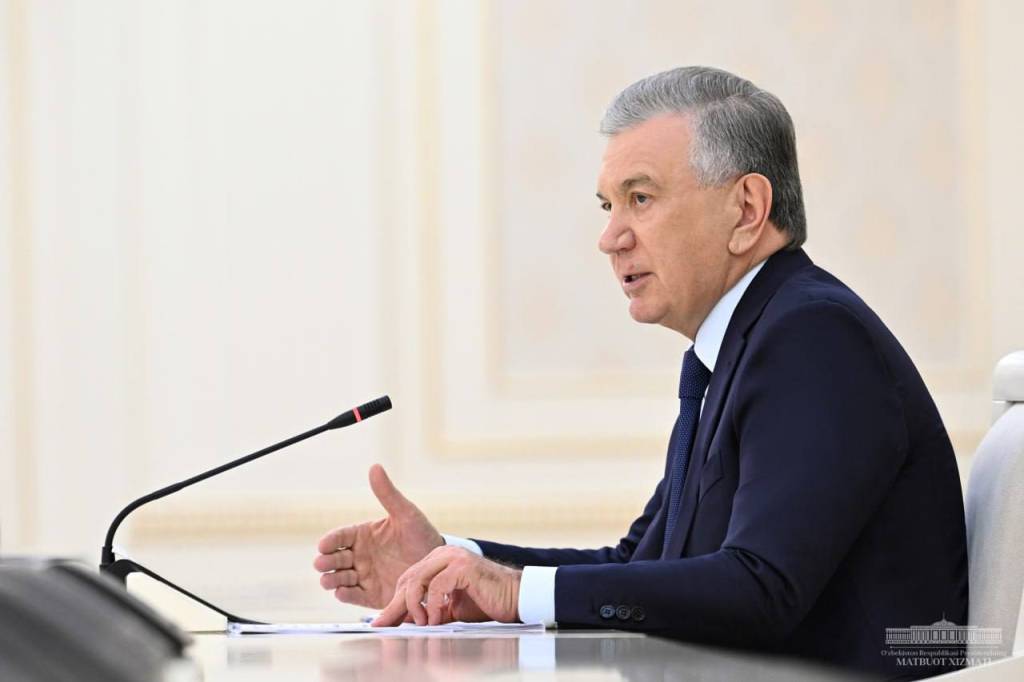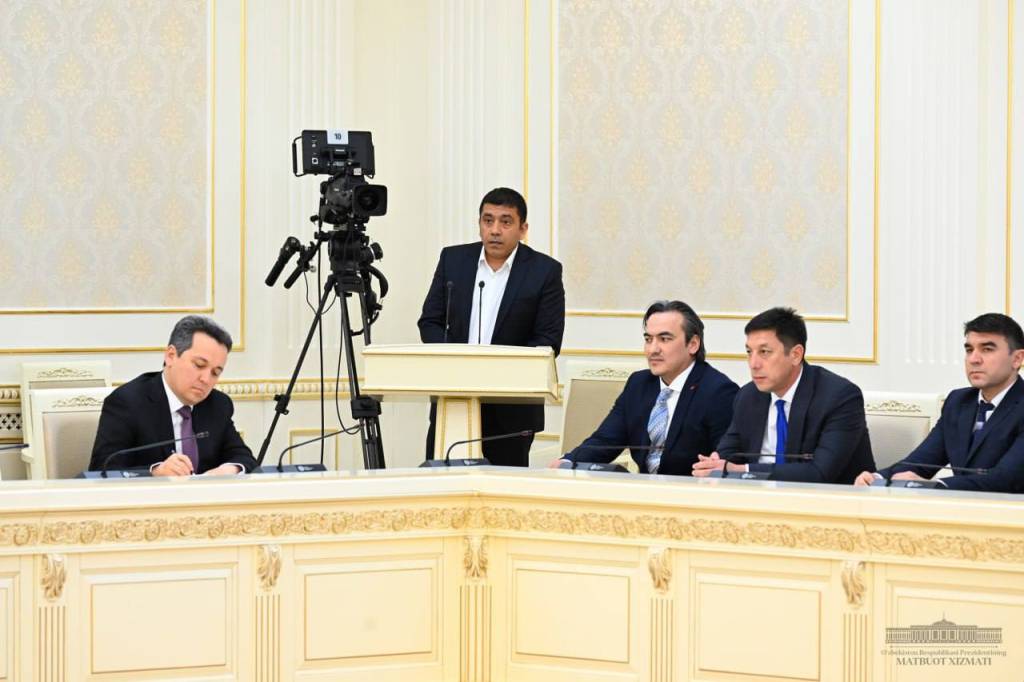On April 16, President Shavkat Mirziyoyev chaired a meeting on the issues of increasing exports and investments in the textile industry.
The textile industry is widely represented in all regions of the country and is one of the sectors with the most jobs. Today, over 6,000 enterprises employ 570,000 people.
In recent years, due to the active attraction of investments and new technologies, productivity in the industry has increased significantly. For example, textile, clothing, and knitwear products worth $8 billion 200 million were produced last year, 4.2 times more than seven years ago.

Also, in 2023, the industry’s exports amounted to $3.1 billion. The sector entered three new markets this year, exporting to 83 countries.
However, an analysis of the export structure shows certain shortcomings. For example, the share of products with high added value is low in the export of finished goods. Almost 80 percent of exports still go to traditional partner markets. Exports to Europe do not meet expectations.
International standards and certifications are required to increase exports to developed country markets or brands. However, only 175 enterprises meet these requirements. In 18 districts, the annual production of textile products does not reach a million dollars.

At the meeting, problematic issues were analyzed, and the enormous opportunities available in the industry were listed.
An analysis by Boston Consulting Group shows that Uzbekistan’s raw material base allows us to produce products worth at least $15 billion and create 500 thousand new jobs.
For example, in Uzbekistan, the cost of one kilogram of yarn is 28 percent cheaper than the average world price. This represents a significant opportunity to increase finished product production and competitive advantage.

In addition, the industry is provided with financial support. At the beginning of last year, $50 million was allocated for projects in the production of fabrics, dyeing, and finishing, as well as finished garments and knitted products. After using these funds, another $100 million is planned.
The Head of state emphasized the need to wisely use these opportunities to increase regional projects and jobs.
“Our only true path in this industry is the complete processing of existing raw materials to create high added value and the reorientation of exports from traditional cheap markets to new, more expensive ones”, Shavkat Mirziyoyev said.

One of the best ways to increase production is to open branches of large enterprises in mahallas. For example, the Zarafshon Textile factory in Samarkand opened 11 regional branches. This has the advantage that there is no need to spend extra time and money on implementing standards or obtaining certifications. Therefore, it is necessary to expand this practice.
One of the most pressing problems for textile enterprises is access to raw materials. Uzbekistan can process 1 million 300 thousand tons of cotton fiber, but at the moment, about 1 million tons of fiber are produced. Therefore, reducing the cost of growing cotton and increasing field productivity is necessary.
The activities of cotton-textile clusters were also discussed, and proposals to ensure their stable activities were considered.

More than 100 industry entrepreneurs attended the videoconference. The President held a dialogue with them.
Entrepreneurs expressed problems and proposals for building textile enterprises, expanding the practice of returning value-added tax within one day, simplifying the receipt of pre-export loans, allocating accessible financial resources, and promoting domestically produced products.
Responsible persons have been instructed to study these issues and develop practical solutions carefully, and, if necessary, make proposals for improving legislation.

The Uzbekistan Textile and Garment Industry Association plays a vital role in the comprehensive development of the industry. The association was proposed to be reorganized so that a council of entrepreneurs would manage it in each direction of the textile industry. Each region will elect its representative to the council. Association staff will help clusters and textile enterprises increase production, investment, and exports and create jobs.
The importance of conducting extensive advertising campaigns in European countries, working with brands, and increasing the number of exporters with international certificates was emphasized.
It was proposed that research and development (R&D) groups be organized in clusters to ensure the integration of science with practice.
Information from responsible persons was heard on the issues discussed at the meeting.
UzA
- Added: 17.04.2024
- Views: 2178
 Ўзбекча
Ўзбекча English
English Русский
Русский
